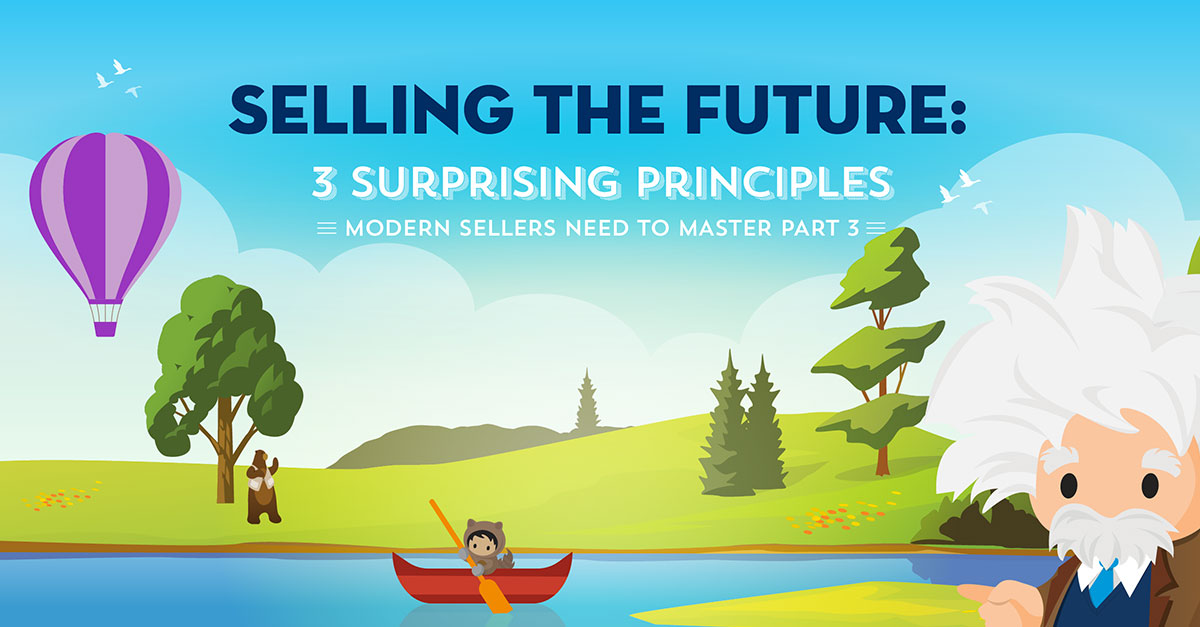In my last post, I introduced the second of three principles that modern sellers need to master if they wish to continue to thrive and meet the changing needs of their buyers. The first principle, disrupting buyer inertia, is all about helping your target customer cast aside their status quo bias. The powerful force that keeps most of us using the same practices, policies, and technologies we’ve always used. It is the enemy of the modern sales machine.
The second principle was the massive conversion power of advocacy. The premise that, in a world were customers struggle to make sense of the multitude of marketing messages and the seemingly infinite product choices they’re exposed to, modern buyers now disproportionately seek the advice of others buyers like themselves. The highest converting source of product and service information.
Today we’ll explore the third and final principle.
Selling the Future Principle #3: Selling Feelings, Not Solutions
Modern neuroscience has proven that most of the decisions we make are emotionally initiated and logically validated. What the means in the sales realm is that, from interest to negotiation, our brains trick us into making seemingly logical decisions, that are actually fuelled by emotion and impulse. It’s no surprise then that truly great salespeople focus on cultivating emotional connections with customers in the same way that great brands avoid selling products. We sell feelings like satisfaction, alignment, conviction, safety, and happiness.
Want proof? One of the questions I ask participants in my sales training is “when a customer makes a decision to purchase a product or service, what percent of the time do they actually buy the BEST tactical solution for their needs?”. The most common answer is typically in the 30-50% range, even when the customer chooses their solution! The reality is, customers buy products and service that meet both their functional/technical needs, as well as their strategic and emotional needs. If they didn’t, the term "retail therapy” wouldn’t exist.
So how can you move from selling solutions to feelings? One of the easiest ways is to look for the deep-rooted feelings and beliefs that underpin your own organization and lead with those in your customer interactions. Does your solution address a deep-rooted, emotionally-charged problem that your buyer experiences every day? Has your organization taken a stand on a particular issue that would be of social interest to them? A recent study showed that 67% of buyers purchased a product or service for the first time because of a position that brand took on a particular issue. The best part about belief-centric approaches is that your team will be able to execute them with passion and high conviction. Stirring a massive amount of positive emotions in your customer’s mind and moving them to convert faster.
In addition, this spring I’ll be keynoting a series of Salesforce events across the country that will help guide sales leaders through the challenges of the modern buying landscape. These events will not only provide deeper insights into these three principles but also tips and tactics to operationalize them in your own business. Be sure to join me and register for these FREE events. Space is limited to best to register early!


